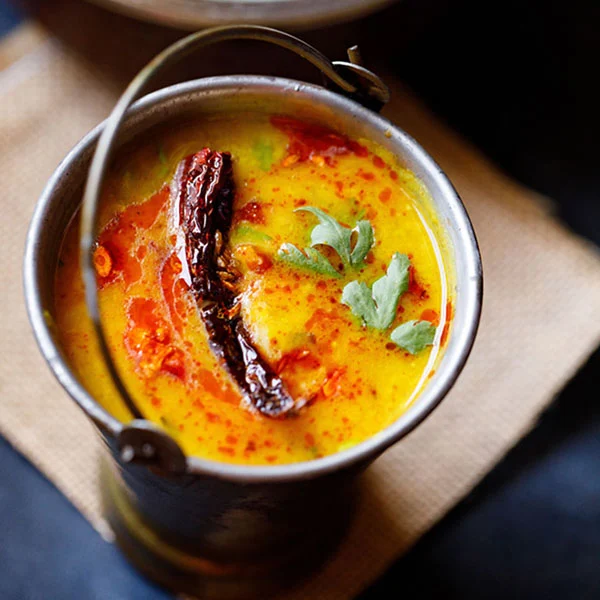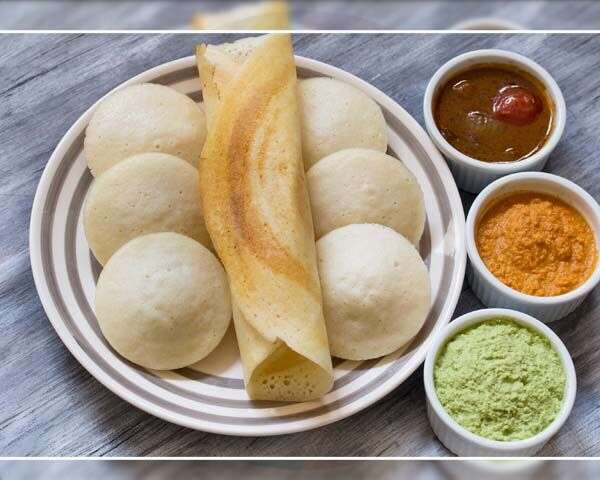Wholesome Indian Dishes for Gut Health
Wholesome Indian Dishes for Gut Health: Nourishing Your Digestive System
Introduction:
Indian cuisine is known for its rich flavors and diverse ingredients, many of which offer remarkable benefits for gut health. In this blog, we will explore three wholesome Indian dishes that not only satisfy your taste buds but also nourish your digestive system. Let’s embark on a culinary journey that promotes a healthy gut!

Khichdi – The Comforting One-Pot Meal
Let’s celebrate the humble yet nourishing khichdi, a traditional Indian dish loved for its simplicity and wholesome flavors. Khichdi is made with a combination of rice, lentils, and aromatic spices.
The beauty of khichdi lies in its balanced nutritional profile. The combination of rice and lentils provides a good amount of fiber and protein, which are essential for healthy digestion and overall well-being. Fiber aids in smooth digestion, prevents constipation, and promotes a healthy gut microbiome.
The aromatic spices used in khichdi, such as cumin, turmeric, and ginger, not only enhance the flavor but also offer numerous health benefits. Turmeric, known for its anti-inflammatory properties, helps reduce gut inflammation and supports a healthy digestive system. Cumin aids in digestion, while ginger provides soothing properties for the stomach.
Here’s a delicious khichdi recipe that you can customize according to your taste preferences:
Ingredients:
1 cup rice
1/2 cup lentils (such as split yellow moong dal)
1 teaspoon cumin seeds
1 teaspoon turmeric powder
1-inch piece of ginger, grated
Salt to taste
Optional: Vegetables of your choice (such as carrots, peas, or spinach)
Instructions:
Rinse the rice and lentils together until the water runs clear.
In a pressure cooker or large pot, heat a tablespoon of ghee or oil. Add the cumin seeds and let them splutter.
Add the grated ginger and turmeric powder. Stir for a few seconds to release the flavors.
Add the rice, lentils, and vegetables (if using). Stir well to coat them with the spices.
Add 3-4 cups of water and salt to taste. Stir again.
If using a pressure cooker, close the lid and cook for 3-4 whistles. If using a pot, cover and cook until the rice and lentils are tender and fully cooked.
Once cooked, let the pressure release naturally or allow the khichdi to rest for a few minutes.
Serve hot, garnished with fresh cilantro leaves and a dollop of ghee.
You can customize your khichdi by adding different vegetables like carrots, peas, or spinach for added nutrition and flavor. You can also experiment with different lentils like moong dal or masoor dal to suit your taste preferences.
By enjoying khichdi, you nourish your body with a wholesome meal that aids digestion, provides essential nutrients, and supports a balanced gut microbiome. It’s a comforting and versatile dish that can be enjoyed on its own or paired with yogurt, pickle, or a side salad. Embrace the nourishing goodness of khichdi and savor its flavors for a hearty and satisfying meal!
Turmeric-Infused Dal Tadka
Let’s celebrate the vibrant spice turmeric, a staple in Indian cooking renowned for its anti-inflammatory properties. Turmeric contains an active compound called curcumin, which has been shown to have numerous health benefits, including reducing gut inflammation and promoting a healthy digestive system.
Curcumin in turmeric acts as a powerful antioxidant and helps to modulate the immune response in the gut, reducing inflammation and promoting gut health. It can support a balanced gut microbiome and aid in proper digestion.
Here’s a delicious dal tadka recipe that incorporates the goodness of turmeric and other flavorful spices:
Ingredients:
1 cup yellow lentils (toor dal)
2 cups water
1 teaspoon turmeric powder
1 teaspoon cumin seeds
1 teaspoon mustard seeds
1 small onion, finely chopped
2 garlic cloves, minced
1-inch piece of ginger, grated
2 tomatoes, chopped
1 green chili, slit
A handful of fresh cilantro leaves, chopped
Salt to taste
2 tablespoons ghee or oil
Instructions:
Rinse the yellow lentils thoroughly and soak them in water for about 30 minutes.
In a pressure cooker or a large pot, add the soaked lentils, water, and turmeric powder. Cook until the lentils are soft and mushy.
In a separate pan, heat ghee or oil. Add the cumin seeds and mustard seeds. Let them splutter.
Add the chopped onion, minced garlic, and grated ginger. Sauté until the onion turns translucent.
Add the chopped tomatoes and green chili. Cook until the tomatoes are soft and mushy.
Transfer the cooked lentils to the pan with the tempered spices. Mix well and add salt to taste.
Simmer the dal for a few minutes to allow the flavors to meld together.
Garnish with fresh cilantro leaves.
This dal tadka not only adds a burst of flavor to your meal but also provides the anti-inflammatory benefits of turmeric. Enjoy it as a comforting and nourishing dish on its own or serve it with steamed rice or roti for a complete meal.
By incorporating turmeric into your cooking, especially in dishes like dal tadka, you can add a delicious and gut-friendly spice to your meals while reaping its anti-inflammatory benefits. Embrace the vibrant flavors of turmeric and enjoy its many health benefits in your everyday cooking!

Fermented Delights – Idli and Dosa
Let’s embark on a journey into the world of fermented foods in Indian cuisine, with a focus on two beloved South Indian dishes: idli and dosa. Fermentation not only enhances the flavors and textures of these dishes but also offers numerous benefits for gut health.
The fermentation process involved in making idli and dosa batters leads to an increase in beneficial bacteria, making them rich in probiotics. These good bacteria promote a healthy gut microbiome, aid digestion, and support overall gut health.
Here are the recipes for homemade idli and dosa batter, along with some tips for proper fermentation:
Homemade Idli Batter:
Ingredients:
2 cups idli rice
1 cup urad dal (skinned black gram)
Salt to taste
Water for soaking and grinding
Instructions:
Rinse the idli rice and urad dal separately, and then soak them in water for about 4-6 hours.
Drain the water and grind the soaked urad dal to a smooth and fluffy batter using a grinder or blender. Add water as needed to achieve the right consistency.
Transfer the urad dal batter to a large bowl.
Next, grind the soaked idli rice to a slightly coarse texture. Add water as needed.
Mix the idli rice batter with the urad dal batter. Add salt and mix well.
Cover the bowl with a lid or a clean cloth and let it ferment in a warm place for about 8-10 hours or overnight.
After fermentation, the batter will have risen and developed a slightly tangy aroma.
Stir the batter well and it’s ready to use for making soft and fluffy idlis.
Homemade Dosa Batter:
Ingredients:
2 cups dosa rice
1/2 cup urad dal (skinned black gram)
1/2 cup poha (flattened rice)
Salt to taste
Water for soaking and grinding
Instructions:
Rinse the dosa rice, urad dal, and poha separately, and then soak them in water for about 4-6 hours.
Drain the water and grind the soaked urad dal to a smooth and fluffy batter. Add water as needed.
Transfer the urad dal batter to a large bowl.
Grind the soaked dosa rice and poha to a smooth batter. Add water as needed.
Mix the dosa rice batter with the urad dal batter. Add salt and mix well.
Cover the bowl with a lid or a clean cloth and let it ferment in a warm place for about 8-10 hours or overnight.
After fermentation, the batter will have a slightly sour aroma and a bubbly texture.
Stir the batter well and it’s ready to use for making crispy and flavorful dosas.
Tips for Proper Fermentation:
Soaking time: Ensure that the rice and dal are soaked for the recommended time to facilitate fermentation.
Consistency: Grind the batter to the right consistency – smooth and fluffy for idli batter, and slightly coarse for dosa batter.
Warm place: Find a warm spot in your kitchen to place the batter for fermentation. You can keep it in the oven with the light on or near a warm stovetop.
Fermentation duration: Ferment the batter for the suggested time to allow the flavors to develop and probiotics to thrive.
Salt: Add salt to the batter after fermentation to prevent the growth of unwanted bacteria during the fermentation process.
By preparing idli and dosa batters at home and allowing them to ferment, you can enjoy the benefits of probiotics and improved digestibility. These gut-friendly fermented foods are not only delicious but also promote a healthy gut microbiome. So, embrace the art of fermentation and savor the flavors of idli and dosa for a nourished and happy gut.

Conclusion:
Indian cuisine offers a treasure trove of wholesome dishes that promote gut health while satisfying your palate. By incorporating dishes like khichdi, turmeric-infused dal tadka, and fermented delights like idli and dosa into your regular meals, you can nourish your digestive system with the richness of Indian flavors. Let your love for Indian cuisine go hand in hand with supporting your gut health for a vibrant and thriving digestive system!

